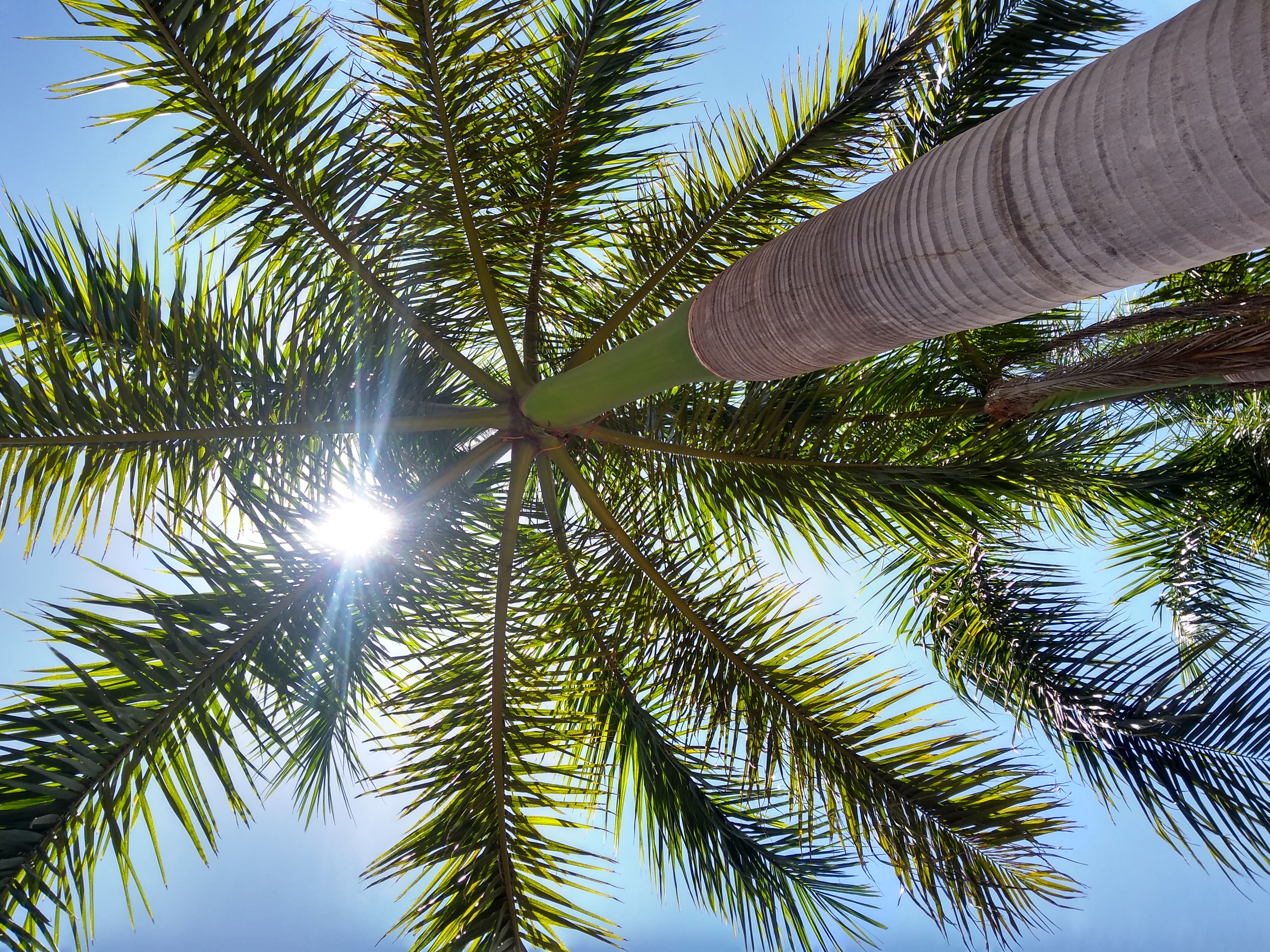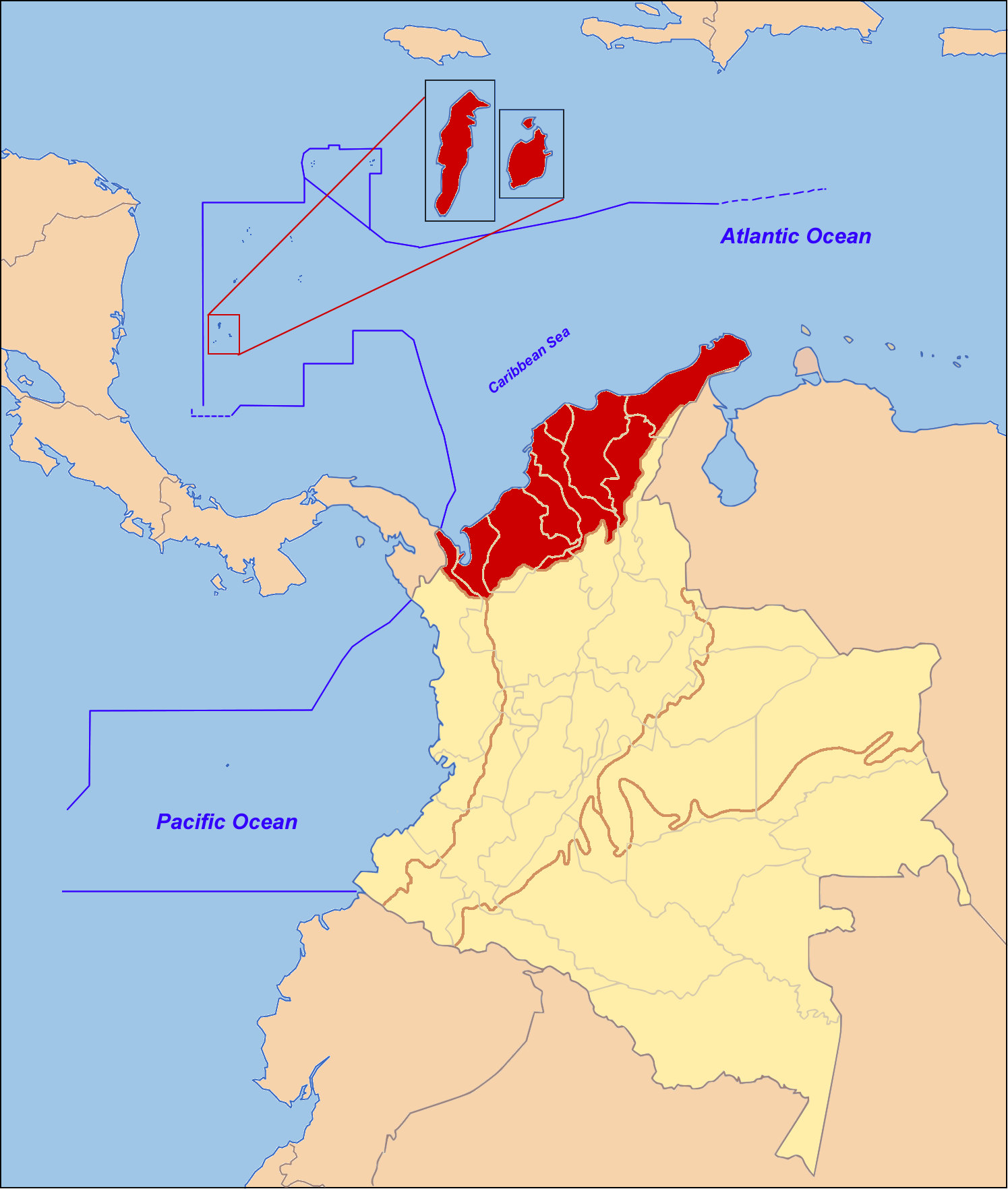|
Fuerte Island
Fuerte Island (Isla Fuerte) is a small coral island in the Caribbean Sea off the northern coast of Colombia, Córdoba department, located south of the Gulf of Morrosquillo. It is located at a distance of 11 km from mainland Colombia. It is part of the chain of islands formed by the Rosario Islands, the Archipelago of San Bernardo and Tortuguilla. The island has very limited facilities for visitors. Geography Fuerte Island is approximately 1 mile in diameter and 1.5 miles from north to south. The island has an area of 3.25 km2 and an elevation of 12m. The island is encircled by reefs and some scattered rocks. Some of the rocks are visible above the water line. File:Mapa de la Isla Fuerte.svg, Map of Fuerte Island File:Puerto Limon- isla fuerte.jpg, Puerto Limón, Fuerte Island Flora and fauna The island has trees spread throughout, with royal palm trees at its center that tower above the others. The island has over 80 species of birds. People Island residents are ... [...More Info...] [...Related Items...] OR: [Wikipedia] [Google] [Baidu] |
Mapa De Colombia (región Insular, Close-up)
Mapa or MAPA may refer to: People * Alec Mapa (born 1965), American actor, comedian and writer * Dennis Mapa (born 1969), Filipino economist and statistician * Jao Mapa (born 1976), Filipino actor * Placido Mapa Jr. (born 1932), Filipino businessman, economist, and government official * Suraj Mapa (born 1980), Sri Lankan actor * Victorino Mapa (1855–1927), Filipino chief justice and government official Other uses * Mapa (song), "Mapa" (song), a 2021 song by SB19 * Mexican American Political Association * Mapa (publisher), an Israeli subsidiary of Ituran * Mapa Group, a Turkish conglomerate * Mapa, a company producing latex gloves that merged with Hutchinson SA in 1973 * Most Affected People and Areas, a climate justice concept See also * * Mappa (other) * Mapah (other) {{disambiguation, surname ... [...More Info...] [...Related Items...] OR: [Wikipedia] [Google] [Baidu] |
Coral Island
A coral island is a type of island formed from coral detritus and associated organic material. It occurs in tropical and sub-tropical areas, typically as part of a coral reef which has grown to cover a far larger area under the sea. Ecosystem Coral reefs are some of the oldest ecosystems on the planet, over geological time forming massive reefs of limestone. The reef environment supports more plant and animal species than any other habitat. Coral reefs are vital for life for multiple aspects some of which include structure, ecology, and nutrient cycles which all support biodiversity in the reefs. Coral reefs build massive calcareous skeletons that serve as homes for animals such as fish hiding inside the crooks and crannies of the reef and barnacles attaching themselves directly to the coral’s structure. The structures also help plants that need the sun to photosynthesis, photosynthesize, by lifting the plants to the ocean’s surface where the sunlight can penetrate the wa ... [...More Info...] [...Related Items...] OR: [Wikipedia] [Google] [Baidu] |
Caribbean Sea
The Caribbean Sea ( es, Mar Caribe; french: Mer des Caraïbes; ht, Lanmè Karayib; jam, Kiaribiyan Sii; nl, Caraïbische Zee; pap, Laman Karibe) is a sea of the Atlantic Ocean in the tropics of the Western Hemisphere. It is bounded by Mexico and Central America to the west and southwest, to the north by the Greater Antilles starting with Cuba, to the east by the Lesser Antilles, and to the south by the northern coast of South America. The Gulf of Mexico lies to the northwest. The entire area of the Caribbean Sea, the numerous islands of the West Indies, and adjacent coasts are collectively known as the Caribbean. The Caribbean Sea is one of the largest seas and has an area of about . The sea's deepest point is the Cayman Trough, between the Cayman Islands and Jamaica, at below sea level. The Caribbean coastline has many gulfs and bays: the Gulf of Gonâve, Gulf of Venezuela, Gulf of Darién, Golfo de los Mosquitos, Gulf of Paria and Gulf of Honduras. The Caribbean Sea has ... [...More Info...] [...Related Items...] OR: [Wikipedia] [Google] [Baidu] |
Colombia
Colombia (, ; ), officially the Republic of Colombia, is a country in South America with insular regions in North America—near Nicaragua's Caribbean coast—as well as in the Pacific Ocean. The Colombian mainland is bordered by the Caribbean Sea to the north, Venezuela to the east and northeast, Brazil to the southeast, Ecuador and Peru to the south and southwest, the Pacific Ocean to the west, and Panama to the northwest. Colombia is divided into 32 departments and the Capital District of Bogotá, the country's largest city. It covers an area of 1,141,748 square kilometers (440,831 sq mi), and has a population of 52 million. Colombia's cultural heritage—including language, religion, cuisine, and art—reflects its history as a Spanish colony, fusing cultural elements brought by immigration from Europe and the Middle East, with those brought by enslaved Africans, as well as with those of the various Amerindian civilizations that predate colonization. Spanish is th ... [...More Info...] [...Related Items...] OR: [Wikipedia] [Google] [Baidu] |
Córdoba Department
Córdoba most commonly refers to: * Córdoba, Spain, a major city in southern Spain and formerly the imperial capital of Islamic Spain * Córdoba, Argentina, 2nd largest city in the country and capital of Córdoba Province Córdoba or Cordoba may also refer to: Places Argentina * Córdoba Province, Argentina Colombia * Córdoba Department * Córdoba, Quindío * Córdoba, Bolívar * Córdoba, Nariño * Córdoba (wetland), a wetland of Bogota Mexico * Córdoba, Veracruz Spain * Province of Córdoba (Spain), of which Córdoba is the capital of ** Córdoba (Spanish Congress electoral district), the electoral district representing the province * Córdoba (Vino de la Tierra), a wine-producing region in Spain *Kingdom of Córdoba, historical territorial jurisdiction of the Crown of Castile Historical Islamic states * Emirate of Córdoba, 756–929 * Caliphate of Córdoba, 929–1031 * Taifa of Córdoba, 11th century Venezuela * Córdoba Municipality, Táchira, a municipalit ... [...More Info...] [...Related Items...] OR: [Wikipedia] [Google] [Baidu] |
Gulf Of Morrosquillo
The Gulf of Morrosquillo ( es, Golfo de Morrosquillo) is a gulf of the Caribbean Sea bounded by the Colombian Departments of Sucre and Córdoba. From West to East it runs approximately from Boca de Tinajones, mouth of Sinú River, in Córdoba, to Punta San Bernardo (San Bernardo Point) in Sucre. Features The coastline of the Gulf of Morrosquillo is shared by the departments of Sucre and Cordoba on the north of Colombia. The main city on the gulf is Tolú; five kilometers away from Tolú is "Las Playas del Francés" (French's Beaches) distinguished because of its wide white sand beaches. Seventeen kilometers away from Tolú is located the tourist town of Coveñas Coveñas is a Resort town and municipality located in the Sucre Department, northern Colombia. It was established in the 16th century as a port for slave traders, then it became an oil port in the twentieth century . It became a municipality in 20 ..., where besides the beautiful beaches it is possible to tast ... [...More Info...] [...Related Items...] OR: [Wikipedia] [Google] [Baidu] |
Rosario Islands
The Rosario Islands (Islas del Rosario), also referred to as Corales Islas del Rosario (Coral Islands of Rosario), is an archipelago located off the coast of Colombia, approximately from Cartagena. It is one of the 46 Natural National Parks of Colombia. The national park was founded in 1988, to protect one of the most important coral reefs of the Colombian Caribbean coast. People can visit the national park area of the islands, and tours are available. Isla Rosario has an aquarium and open-sea oceanarium (''oceanario'') that people can visit. Activities include swimming, snorkeling and fishing, among others. Geography and geology The park has an area of , from the line of the highest tide to the beryl of the of depth, it extends from the underwater platform and the coral reefs west from the Island of Baru, the reefs of the archipelagos of Nuestra Señora del Rosario and San Bernardo and the underwater platform in between, as well as the Tesoro, Rosario, Mucura, and Mara ... [...More Info...] [...Related Items...] OR: [Wikipedia] [Google] [Baidu] |
Archipelago Of San Bernardo
The Archipelago of San Bernardo ( es, Archipiélago de San Bernardo, Islas de San Bernardo) is a set of nine coastal coral islands and one artificial island (ten in total) belonging to and governed by Colombia, located in the Gulf of Morrosquillo in the Caribbean Sea, with an approximate area of 213 km2. Administratively, the archipelago belongs to the Bolívar Department, with the exception of Boquerón Island, which belongs to the Sucre Department. It consists of Boquerón Island, Cabruna Island, Ceycén Island, Mangle Island, Múcura Island, Palma Island, Panda Island, Santa Cruz del Islote (English: Santa Cruz Islet, an artificial island), Tintipán Island and Maravilla Island. All the 10 islands are close to the towns Tolu and Coveñas. Since 1996, part of the archipelago belongs to the Rosario and San Bernardo Corals National Natural Park. Lodging facilities are present on some of the islands, primarily Múcura Island and Palma Island. Flora and fauna Waters aroun ... [...More Info...] [...Related Items...] OR: [Wikipedia] [Google] [Baidu] |
Reef
A reef is a ridge or shoal of rock, coral or similar relatively stable material, lying beneath the surface of a natural body of water. Many reefs result from natural, abiotic processes— deposition of sand, wave erosion planing down rock outcrops, etc.—but there are also reefs such as the coral reefs of tropical waters formed by biotic processes dominated by corals and coralline algae, and artificial reefs such as shipwrecks and other anthropogenic underwater structures may occur intentionally or as the result of an accident, and sometimes have a designed role in enhancing the physical complexity of featureless sand bottoms, to attract a more diverse assemblage of organisms. Reefs are often quite near to the surface, but not all definitions require this. Earth's largest coral reef system is the Great Barrier Reef in Australia, at a length of over . Biotic There is a variety of biotic reef types, including oyster reefs and sponge reefs, but the most massive and widely ... [...More Info...] [...Related Items...] OR: [Wikipedia] [Google] [Baidu] |
Royal Palm
''Roystonea regia'', commonly known as the Cuban royal palm or Florida royal palm, is a species of palm that is native to Mexico, parts of Central America and the Caribbean, and southern Florida. A large and attractive palm, it has been planted throughout the tropics and subtropics as an ornamental tree. Although it is sometimes called ''R. elata'', the conserved name ''R. regia'' is now the correct name for the species. The royal palm reaches heights from 50 to over 80 feet tall. Populations in Cuba and Florida were long seen as separate species, but are now considered a single species. Widely planted as an ornamental, ''R. regia'' is also used for thatch, construction timber, and in some forms of so-called traditional medicine, although there is currently no valid scientific evidence to support the efficacy or use of any palm species for medicinal purposes. The fruit is eaten by birds and bats (which disperse the seeds) and fed to livestock. Its flowers are visited by bir ... [...More Info...] [...Related Items...] OR: [Wikipedia] [Google] [Baidu] |
Caribbean Region Of Colombia
The Caribbean region of Colombia or Caribbean coast region is in the north of Colombia and is mainly composed of 8 departments located contiguous to the Caribbean. MEMO: Natural Regions of Colombia Memo.com.co Accessed 22 August 2007. The area covers a total land area of , including the in the and corresponding to approximately 1/10 of the total territory of Colombia. The Caribbean region of Colom ... [...More Info...] [...Related Items...] OR: [Wikipedia] [Google] [Baidu] |




